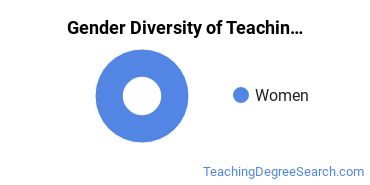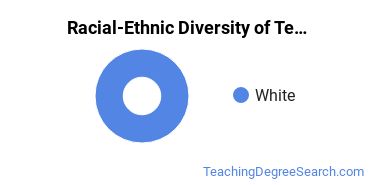Teaching Assistants at Dordt University
Dordt is located in Sioux Center, Iowa and approximately 1,662 students attend the school each year.
Want to know more about the career opportunities in this field? Check out the Careers in Teaching Assistants section at the bottom of this page.
Dordt Teaching Assistants Degrees Available
- Associate’s Degree in Teaching Assistants
Dordt Teaching Assistants Rankings
Teaching Assistants Student Demographics at Dordt
Take a look at the following statistics related to the make-up of the teaching assistants majors at Dordt University.
Dordt Teaching Assistants Associate’s Program

The majority of those who receive an associate's degree in teaching assistants at Dordt are white. Around 100% fell into this category, which is below average for this degree.
The following table and chart show the race/ethnicity for students who recently graduated from Dordt University with a associate's in teaching assistants.

| Race/Ethnicity | Number of Students |
|---|---|
| Asian | 0 |
| Black or African American | 0 |
| Hispanic or Latino | 0 |
| White | 2 |
| International Students | 0 |
| Other Races/Ethnicities | 0 |
Concentrations Within Teaching Assistants
The following teaching assistants concentations are available at Dordt University. The table shows all degrees awarded in this field awarded for all degree levels at Dordt University. A concentration may not be available for your level.
| Concentration | Annual Degrees Awarded |
|---|---|
| Teacher Assistant/Aide | 1 |
Related Majors
- Teacher Education Subject Specific
- Special Education
- Curriculum & Instruction
- Educational Administration
- Teacher Education Grade Specific
Careers That Teaching Assistants Grads May Go Into
A degree in teaching assistants can lead to the following careers. Since job numbers and average salaries can vary by geographic location, we have only included the numbers for IA, the home state for Dordt University.
| Occupation | Jobs in IA | Average Salary in IA |
|---|---|---|
| Teacher Assistants | 19,890 | $25,320 |
References
*The racial-ethnic minorities count is calculated by taking the total number of students and subtracting white students, international students, and students whose race/ethnicity was unknown. This number is then divided by the total number of students at the school to obtain the racial-ethnic minorities percentage.
More about our data sources and methodologies.
